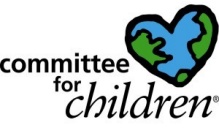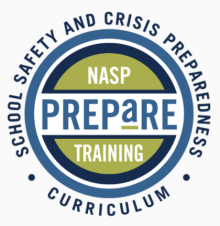Projects
Explore our ongoing research projects that address understanding, preventing, and intervening with bullying and other types of violence and abuse that impact children, schools, and communities.
Bystander Intervention in Bullying

Bullying is now recognized as a group process where peers witness the majority of incidents. Our research examines the extent to which variables such as empathy, relationships with parents, norms, and affiliations with peers predict intervening (directly or indirectly) with bullying. We have also developed and validated a measure of the bystander intervention model for bullying and sexual harassment.
Cyberbullying and Screen Media Use

Research has found important differences in screen media use among youth, including frequency of use, platforms used, content consumed, and interactive or more passive use. However, many questions remain regarding the impact of screen media use on peer relationships and mental health. Our research examines the variation in screen media use among youth and how differences in media use are associated with involvement in cyberbullying.
Social Emotional Learning and Bullying Prevention

Social Emotional Learning (SEL) skills (emotional awareness and regulation, perspective taking, relationship skills, and problem solving) are essential skills for all children for healthy development; however, these skills are especially important for youth involved in bullying.
Dr. Fredrick and Dr. Nickerson's research examines the extent to which universal SEL instruction in schools can improve school climate and culture, prevent bullying, and protect youth that are targets of bullying from further negative outcomes.
Building Youth Resiliency and School Capacity to Identify and Respond to Violent Behavior Through Bystander Intervention Training

PI: Amanda Nickerson, PhD
Co-I: Stephanie Fredrick, PhD
Funding Information: US Department of Homeland Security, EMW-2023-GR-00124-S01, 10/1/23-09/30/25
The grant will fund development of a Training of Trainers (TOT) training model for two bystander intervention programs: Norms and Bystander Intervention Training (NAB IT!) and Communities Acting to Refer and Engage (CARE). A minimum of 200 high school students at four schools will be trained in NAB IT!; at least 200 students and 80 high school faculty and staff will be trained in CARE so they can safely interject when they witness issues of concern.
Creating Upstanders: The Development of Norms and Bystander Intervention Training (NAB IT!) to Reduce Bullying and Sexual Harassment

PI: Amanda Nickerson, PhD
Co-Is: Jennifer Livingston, PhD | Thomas Feeley, PhD | Lyndsay Jenkins, PhD
Funding Information: Institute for Education Sciences, R305A190139, 7/1/2019-12/31/2024
This project, funded by the Institute of Education Sciences (IES) will develop and test a social norms and bystander intervention training to reduce bullying and sexual harassment in high schools. NAB IT! (Norms And Bystander Intervention Training) relies on influential peer leaders in high schools to establish social norms and bystander intervention training to promote peer intervention in instances of bullying and sexual harassment to improve school climate.
PREPaRE School Crisis Prevention and Intervention Program Evaluation
PI: Amanda Nickerson, PhD
Funding Information: National Association of School Psychologists, 8/15/2011-5/31/2024
The PREPaRE curriculum was developed by the National Association of School Psychologists (NASP) in order to provide training for school personnel in crisis prevention and intervention. Continued evaluation is an integral piece of the PREPaRE model and is used to further refine training and curriculum. Our research studies have indicated high amounts of participation satisfaction as well as significant increases in knowledge and attitudes toward crisis prevention and intervention.
Multi-Media Peer-to-Peer Abuse Prevention
PIs: Amanda Nickerson, PhD and Dan Albertson, PhD
Team members: Kathleen Allen, PhD | Brie Kishel | Courtney Doxbeck | David Mawer
Funding Information: New York State Developmental Disabilities Planning Council, 4/1/2018-10/31/2019
The Alberti Center team has worked with the New York State Developmental Disabilities Planning Council to help with their long-range strategic planning around the issues of bullying and people with disabilities. A follow-up project involved creating a website and resource directory (end-abuse.org) in order to provide educational information, resources, and tools to support people with intellectual and developmental disabilities experiencing various forms of abuse.
Bullying Prevention and Individuals with Disabilities
PI: Amanda Nickerson, PhD
Funding Information: New York State Developmental Disabilities Planning Council, 12/1/2013-11/30/2014

Randomized Controlled Trial of Second Step Child Protection Unit
PI: Amanda Nickerson, PhD
Co-Is: Jennifer Livingston, PhD | Sunha Kim, PhD
Funding Information: Committee for Children, 5/1/2017-1/30/2020
Evaluation of Second Step Family Videos to Promote Child Personal Safety
Multiple PIs: Jennifer Livingston, PhD | Amanda Nickerson, PhD
Funding Information: Committee for Children, 10/1/2015-12/30/2016
This project assesses the impact of the EL-G5 Second Step Child Protection Unit (CPU) in a randomized control trial involving eight schools in New York. The study assesses whether the CPU lessons improve student knowledge to recognize, report, and refuse unsafe situations. It also examines whether the staff training improves staff knowledge and motivation. Earlier work included a randomized controlled trial and focus group study of the Second Step Child Protection Family Videos in promoting parent or caregiver discussions about child sexual abuse.
Developmental Pathways of Violence and Substance Use in a High Risk Sample

Multiple PIs: Amanda Nickerson, PhD | Rina Eiden, PhD
Co-Is: Jamie Ostrov, PhD | Stephanie Godleski, PhD | Joseph Lucke, PhD | William Wieczorek, PhD
Funding Information: National Institute of Health, 1R01DA041231-01 (NIDA), 7/1/2015-3/31/2021 (no-cost extension)
This is a multi-method, longitudinal study of developmental pathways to violence/victimization and substance use (VVSU) as risks for gun violence, in a sample characterized by high pre- and post-natal risks. The study focuses on two major pathways.
The first is a reactive aggression pathway and the second is a proactive aggression pathway. The role of community risk factors will be explored.
Peer Victimization as a Pathway to Adolescent Substance Use

PI: Jennifer Livingston, PhD
Co-Is: Kathleen Miller, PhD | Maria Testa, PhD | Jaye Derrick, PhD | Joseph Lucke, PhD | Amanda Nickerson, PhD
Funding Information: National Institute for Alcohol Abuse & Alcoholism, R01AA021169, 8/1/2013-7/31/2019 (no-cost extension)
This five-year longitudinal study funded by NIAA studied the circumstances under which peer victimization is deleterious and for whom, as well as potential protective factors that can be targeted for intervention.

